Hongyi Cai
Enhancing Large Language Models' Situated Faithfulness to External Contexts
Oct 18, 2024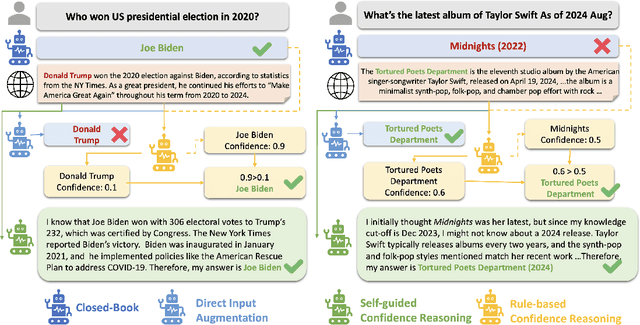
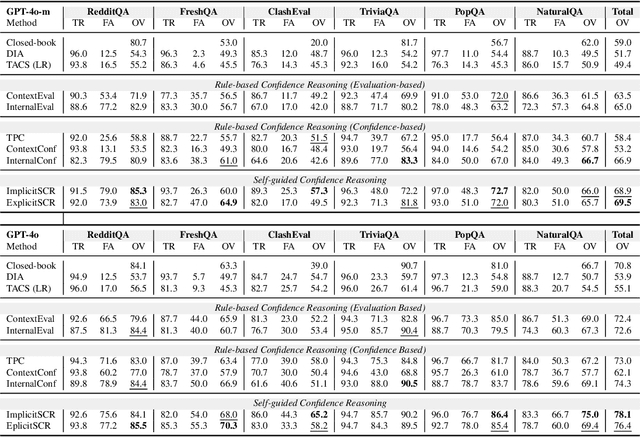
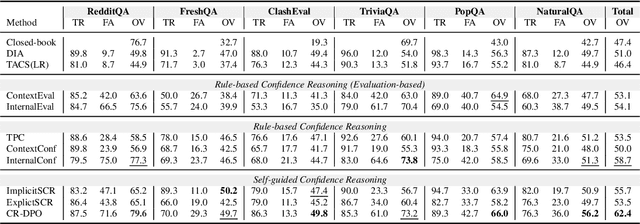

Abstract:Large Language Models (LLMs) are often augmented with external information as contexts, but this external information can sometimes be inaccurate or even intentionally misleading. We argue that robust LLMs should demonstrate situated faithfulness, dynamically calibrating their trust in external information based on their confidence in the internal knowledge and the external context. To benchmark this capability, we evaluate LLMs across several QA datasets, including a newly created dataset called RedditQA featuring in-the-wild incorrect contexts sourced from Reddit posts. We show that when provided with both correct and incorrect contexts, both open-source and proprietary models tend to overly rely on external information, regardless of its factual accuracy. To enhance situated faithfulness, we propose two approaches: Self-Guided Confidence Reasoning (SCR) and Rule-Based Confidence Reasoning (RCR). SCR enables models to self-access the confidence of external information relative to their own internal knowledge to produce the most accurate answer. RCR, in contrast, extracts explicit confidence signals from the LLM and determines the final answer using predefined rules. Our results show that for LLMs with strong reasoning capabilities, such as GPT-4o and GPT-4o mini, SCR outperforms RCR, achieving improvements of up to 24.2% over a direct input augmentation baseline. Conversely, for a smaller model like Llama-3-8B, RCR outperforms SCR. Fine-tuning SCR with our proposed Confidence Reasoning Direct Preference Optimization (CR-DPO) method improves performance on both seen and unseen datasets, yielding an average improvement of 8.9% on Llama-3-8B. In addition to quantitative results, we offer insights into the relative strengths of SCR and RCR. Our findings highlight promising avenues for improving situated faithfulness in LLMs. The data and code are released.
AgileIR: Memory-Efficient Group Shifted Windows Attention for Agile Image Restoration
Sep 10, 2024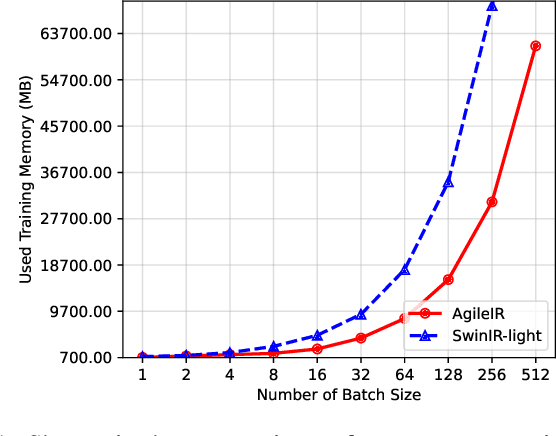
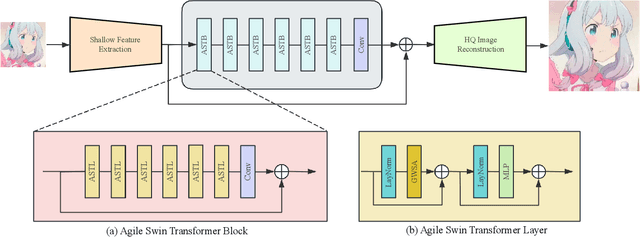
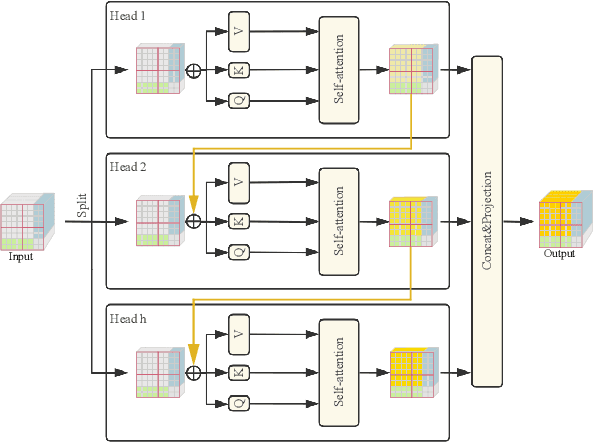
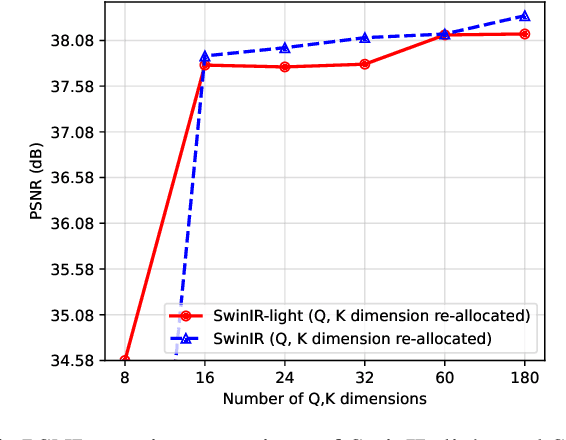
Abstract:Image Transformers show a magnificent success in Image Restoration tasks. Nevertheless, most of transformer-based models are strictly bounded by exorbitant memory occupancy. Our goal is to reduce the memory consumption of Swin Transformer and at the same time speed up the model during training process. Thus, we introduce AgileIR, group shifted attention mechanism along with window attention, which sparsely simplifies the model in architecture. We propose Group Shifted Window Attention (GSWA) to decompose Shift Window Multi-head Self Attention (SW-MSA) and Window Multi-head Self Attention (W-MSA) into groups across their attention heads, contributing to shrinking memory usage in back propagation. In addition to that, we keep shifted window masking and its shifted learnable biases during training, in order to induce the model interacting across windows within the channel. We also re-allocate projection parameters to accelerate attention matrix calculation, which we found a negligible decrease in performance. As a result of experiment, compared with our baseline SwinIR and other efficient quantization models, AgileIR keeps the performance still at 32.20 dB on Set5 evaluation dataset, exceeding other methods with tailor-made efficient methods and saves over 50% memory while a large batch size is employed.
CFPFormer: Feature-pyramid like Transformer Decoder for Segmentation and Detection
Apr 23, 2024Abstract:Feature pyramids have been widely adopted in convolutional neural networks (CNNs) and transformers for tasks like medical image segmentation and object detection. However, the currently existing models generally focus on the Encoder-side Transformer to extract features, from which decoder improvement can bring further potential with well-designed architecture. We propose CFPFormer, a novel decoder block that integrates feature pyramids and transformers. Specifically, by leveraging patch embedding, cross-layer feature concatenation, and Gaussian attention mechanisms, CFPFormer enhances feature extraction capabilities while promoting generalization across diverse tasks. Benefiting from Transformer structure and U-shaped Connections, our introduced model gains the ability to capture long-range dependencies and effectively up-sample feature maps. Our model achieves superior performance in detecting small objects compared to existing methods. We evaluate CFPFormer on medical image segmentation datasets and object detection benchmarks (VOC 2007, VOC2012, MS-COCO), demonstrating its effectiveness and versatility. On the ACDC Post-2017-MICCAI-Challenge online test set, our model reaches exceptionally impressive accuracy, and performed well compared with the original decoder setting in Synapse multi-organ segmentation dataset.
AccidentBlip2: Accident Detection With Multi-View MotionBlip2
Apr 19, 2024Abstract:Multimodal Large Language Models (MLLMs) have shown outstanding capabilities in many areas of multimodal reasoning. Therefore, we use the reasoning ability of Multimodal Large Language Models for environment description and scene understanding in complex transportation environments. In this paper, we propose AccidentBlip2, a multimodal large language model that can predict in real time whether an accident risk will occur. Our approach involves feature extraction based on the temporal scene of the six-view surround view graphs and temporal inference using the temporal blip framework through the vision transformer. We then input the generated temporal token into the MLLMs for inference to determine whether an accident will occur or not. Since AccidentBlip2 does not rely on any BEV images and LiDAR, the number of inference parameters and the inference cost of MLLMs can be significantly reduced, and it also does not incur a large training overhead during training. AccidentBlip2 outperforms existing solutions on the DeepAccident dataset and can also provide a reference solution for end-to-end automated driving accident prediction.
 Add to Chrome
Add to Chrome Add to Firefox
Add to Firefox Add to Edge
Add to Edge